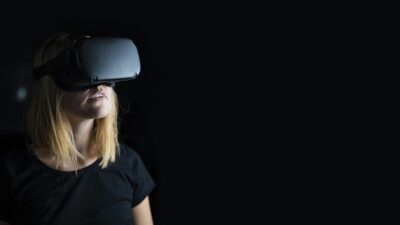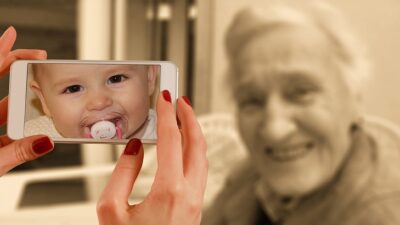In the past decade, wearable technology has primarily captured attention in the fitness realm, offering tracking tools for health enthusiasts and casual exercisers alike. However, the versatility of these devices extends far beyond heart rate monitoring and step counting. From enhancing productivity to improving social interactions, wearable technology is transforming various aspects of our daily lives. Here, we explore some innovative uses of wearables and how they’re reshaping everyday experiences.
1. Health Monitoring Beyond Exercise
While fitness tracking remains a significant application of wearables, their potential in health monitoring is remarkably expansive. Wearable devices equipped with sensors can track various biometrics such as blood glucose levels, oxygen saturation, sleep patterns, and even stress levels.
Example: Continuous Glucose Monitors (CGMs)
For individuals with diabetes, CGMs provide real-time glucose levels, allowing for better disease management. This technology empowers users to make informed decisions about their diet and activity levels, improving their overall health outcomes.
2. Mental Health and Well-Being
Wearable technology is becoming increasingly valuable in mental health management. Devices equipped with heart rate variability (HRV) sensors can offer insights into stress levels and emotional well-being.
Example: Mindfulness Features
Some wearables come with built-in mindfulness and meditation applications that prompt users to engage in breathing exercises or mindfulness training when stress indicators spike. This can lead to reduced anxiety and improved mental clarity, turning the device into a helpful ally in achieving emotional balance.
3. Enhanced Communication and Connectivity
Wearables enable seamless communication, reducing the need for one to constantly check their smartphones. Smartwatches and smart glasses, for instance, can deliver notifications, calls, and messages right on the wrist or in the line of sight.
Example: Smart Glasses
Companies like Google and Vuzix have developed smart glasses that provide augmented reality experiences. Users can access navigation assistance, view notifications, or engage in video calls, facilitating hands-free communication—a significant advance for professionals in demanding fields like healthcare and logistics.
4. Personal Safety and Emergency Services
Wearable technology is incorporating safety features that can prove invaluable in emergencies. For instance, some devices offer fall detection, emergency SOS features, and location tracking.
Example: Child Safety Wearables
Brands are developing wearables specifically designed for children, allowing parents to track their location in real time. These devices can alert parents if a child leaves a designated safe area, enhancing peace of mind for both children and their caregivers.
5. Smart Home Integration
Wearables are increasingly being integrated with smart home technologies, making daily routines more convenient. Users can control their home environments simply through their wearables.
Example: Home Management
By syncing smartwatches with home automation systems, users can adjust lighting, control thermostats, or even lock doors from their wrist. This integration streamlines tasks, promotes energy efficiency, and enhances overall home security.
6. Fashion and Personal Expression
Wearable technology is beginning to blend seamlessly with fashion, transforming how individuals express themselves while enjoying the benefits of smart technology.
Example: Smart Jewelry
Innovative designs in smart jewelry, such as rings or necklaces that monitor health metrics or alert the wearer of notifications, make it possible to marry aesthetics with functionality. These items allow users to maintain their personal style while staying connected.
7. Education and Learning
Wearable tech is also making waves in educational settings, providing tools that enhance the learning experience. From smartwatches that alert students to important deadlines and events to VR headsets that facilitate immersive learning, the possibilities are endless.
Example: AR Learning Tools
Augmented reality wearables can help students visualize complex concepts, such as in biology or chemistry, by immersively demonstrating them in real-time. This interactive learning fosters deeper understanding and retention of information.
8. Gaming and Entertainment
The gaming industry has embraced wearable technology, incorporating it into immersive experiences that enhance gameplay. Wearables can track players’ movements, heart rates, and even emotional responses, creating a more interactive environment.
Example: Fitness Gaming
Devices like the Oculus Quest 2 allow gamers to track their physical exertion and performance while playing VR games, making gaming a more physically engaging and health-conscious experience.
Conclusion
The applications of wearable technology are as diverse as they are transformative. From health monitoring and mental well-being to enhanced communication and safety, wearables are proving to be vital tools in navigating the complexities of modern life. As technology continues to evolve, the future promises even more exciting innovations that will further integrate these devices into our daily routines, enriching our experiences in ways we’ve yet to imagine. The journey into the world of wearables is just beginning, and it holds the potential to revolutionize not only how we approach fitness but how we engage with the world around us.



